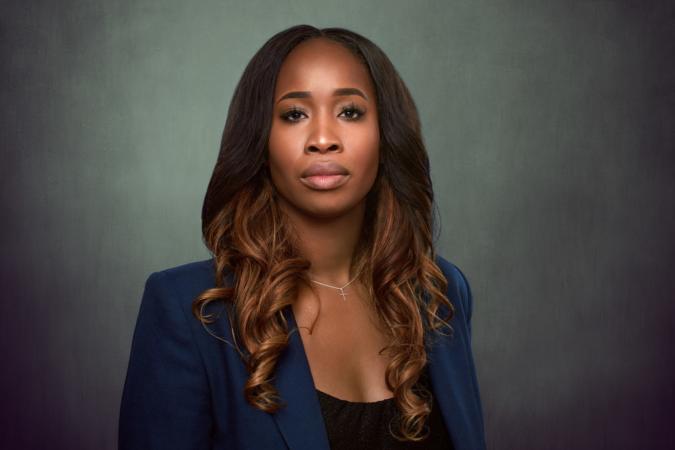Product inclusion means to ensure equitable product experiences. It’s about factoring empathy into the invention and design process by engaging with the spectrum of potential users. My job is to bridge the gap between the product teams creating and the users across the world who look, think, and act differently from them. For our products to be helpful for all, we must build with those underrepresented users in order to understand and meet their needs.
As a Haitian-American, left-handed woman, I’ve experienced when a product was not designed with me in mind. I’ve used social media filters that automatically lighten my skin tone, and I’ve held products that felt uncomfortable because they were made for right-handed people. I’ve experienced trying to take a photo and having members of my family not show up and had speech recognition services not understand the accents of my friends. Those design flaws were not intended, but they show how a siloed creation process leaves certain groups out.
So instead, we need to connect with people of varying experiences and backgrounds throughout the process. Only then can we even begin to account for the near-limitless ways a user may interact with a product. After all, shouldn’t our devices, tools, and services be equally as diverse as the society that uses them?
It seems obvious, but we all know certain groups have been historically underrepresented — whether based on race, gender, sexuality, physical and neuro ability, socioeconomic status, the list goes on — and that has not stopped at product design. When every step of the innovation process is owned by a single group, the ideas will inextricably be framed by the specific problems that the group faces. Simply put, people cannot create solutions to problems they are completely unaware of.
For that reason, it’s so important to be intentional with who you consult with along the creation process. That’s what product inclusion boils down to — listening to outside perspectives, caring about what you hear, and being humble enough to put that insight ahead of whatever you had originally envisioned.
Doing that will not only make you a more socially conscious designer, but it will also open you up to more business opportunities. The foremost goal of product inclusion is to uplift underrepresented groups and help them achieve the visibility that is duly owed, but there is a financial motivation as well, which is crucial for companies to buy into the cultural change.
There are trillions of dollars in buying power in the underrepresented economy. By 2023, women globally are estimated to have a combined income of $18 trillion. The one billion individuals across the world who identify as having a disability make up a $1 trillion market. Within the U.S., Black, Latinx, Asian American, and American Indian communities have a combined spending power of roughly $4 trillion. This is all to illustrate that, for a company, the upfront investment to shift toward a product inclusion mentality is far outweighed by the monetary upside of wide-reaching, accessible products, and services.
In short, as more people feel welcomed into your ecosystem, more capital becomes available and new markets to enter will emerge. As I’ve already mentioned, accomplishing that requires collaborating with as many outside viewpoints as possible, but it’s also essential to put together teams that reflect the communities they create for. Diverse teams ultimately make better products because they have a greater wealth of life experiences to draw on, which minimizes the possibility of alienating underrepresented users. There’s still a lot of groundwork to be done to widen recruitment, retention, and promotion pipelines, but after the wave of corporate change this year, I’m confident that we are materially moving in the right direction.
Across industries, the output must evolve to match the social progress and ideals of the times. Product inclusion is the ideological space where that empathetic learning can happen, and action and accountability can begin. By starting projects founded on these principles of co-creation, we can ensure that going forward, we are always building for everyone, with everyone.
Annie Jean-Baptiste is the Head of Product Inclusion at Google, and the author of Building for Everyone: Expand Your Market Design Practices from Google’s Product Inclusion Team.

